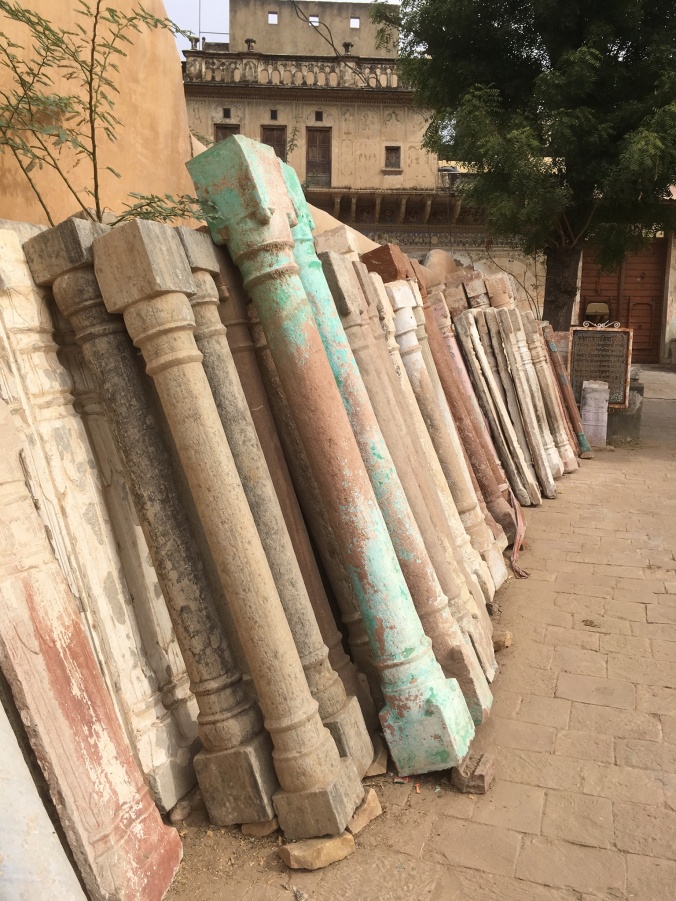Shekhawati
I had arrived at my accommodation for the next few days - a palace in a remote village in northern Rajasthan - tired, but happy to be back in India. The previous evening I had flown from Melbourne to Delhi, then to Jaipur where my taxi picked me up for the 4 hour drive north to the village of Alsisar - all in the same day. I was ready for sleep, but managed to find the energy for some much needed sustenance in the dining room before turning in.

Waking up in the morning after a great night’s sleep in my luxurious bedroom in with beds so high, a footstool is provided, and a bathroom as big as my living room, I was ready to face a day of research in the Shekhawati area of northern Rajasthan.
My driver, Bhajirath (Bhaji for short) was proving to be a great companion – thoughtful, funny, informative. Also a great one for the selfie – a form of photography I normally spurn, but when in India…..

We left the palace after breakfast to explore the area famous for the abandoned havelis (mansions) built by rich merchants when the Silk Road passed through Rajasthan. The traders competed with each other to build grander and more elaborate havelis, temples and stepwells, only to abandon them, and the camel trains, when shipping out of Kolkata became a faster option to get their goods to the world.
The havelis are famous for the painted murals inside and out. Many are in disrepair, some are renovated and turned into hotels or restaurants, others lie in pieces waiting to be sold off for someone to reconstruct or create their own haveli.




I was also on the lookout for old beads and jewellery and my search took me to a trader in the bazaar – now a deserted place with a few guys and dogs passing the time in the shade of ancient trees. I was the only foreigner there.
Kishore identified himself as the owner of the antique store. He had taken over some subterranean tunnels with steep stone steps leading down to his collections of antiques collected from the abandoned havelis. Originally the food cellars of a haveli, these tunnels have no electricity, so browsing is done by torchlight.

One 300 year old dhola (I think this was the name) – bucket, begged me to take it home with me, and my resolve neither to add weight to my luggage nor lighten my bank account dissolved as I admired the work of the unknown tradesman who hammered out this metal, riveted it together, fashioned into the elegant bulbous shape & finished it off with a wrought handle with swivel. It was originally used to fetch water from a well. Now it will find a new home in Australia.

